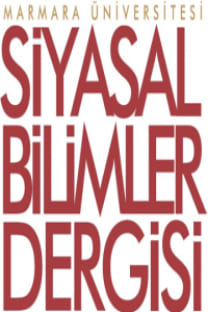Nuclear Nonproliferation Regime: Are New Institutions Needed?
The existence of nuclear weapons, including the increasing of tactical nuclear weapons, is the major causeof a current nuclear threat at both the international and regional levels. In addition to the continuationof political and military motivations of states to acquire nuclear weapons, the institutional challengesof nuclear nonproliferation do also complicate this current problem. Even though the political andmilitary motivations of states to acquire nuclear weapons are examined by the vast amount of studies,the effectiveness of international nuclear regime is rarely analyzed. Regarding the continuation ofnuclear energy importance and the dual nature of nuclear technology, the necessity for reliable andeffective institutions to prevent proliferation of nuclear weapons became more apparent. Therefore, thisarticle aims to shed light on the ineffectiveness of the current international nuclear regime and the needfor new institutional mechanism. This article analyzed the effectiveness of international nuclear regimemeasuring its capability of problem-solving, reducing nuclear motivations of states, providing legalframework and verification process, and creating and consolidating normative principles. While thenuclear regime could partly be seen as effective regarding the low number of current nuclear weaponstates than the expected numbers in 1960s, it faces with serious challenges in solving the nuclearproblem. One of the challenges emerges because of the lack of universal acceptance of the internationaltreaties and organizations. The regime has also not effectively addressed to reduce the nuclearmotivations of states. Even though it has provided legal framework and verifying process, there are stilldifficulties to detect nuclear activities for military purposes. Lastly, the regime has effectively createdthe non-use and deterrence norms, while failed to create and consolidate the nonproliferation norm,based on total elimination of nuclear weapons. In fact, this article argues that the current institutional mechanism should be revised considering the causes of threats; furthermore, new mechanisms shouldbe established in order to meet the newly emerged challenges in the post-Cold War era. In that respect,this article firstly analyzes the ineffectiveness of current international nuclear regime in order todemonstrate the urgent need for a paradigm shift. Then, it suggests a new multilateral mechanism, asan attempt to contribute to create a discussion platform for alternative institutional mechanisms.
Keywords:
international nuclear regime, effectiveness of nuclear regime nuclear weapons, nonproliferation of nuclear weapons,
___
- Diyakov, A. S. (Winter 2010) “The Nuclear “Renaissance” & Preventing the Spread of Enrichment & Reprocessing Technologies: A Russian View”, Daedalus 139 (1), 117-125. Valezquez, A. C. S. (December 2004) “Civil-Military Affairs and Security Institutions in the Southern Cone: The Sources of Argentine-Brazilian Nuclear Cooperation”, Latin American Politics and Society 46 (4): 29. Braun, C. and Chyba F. C. (Fall 2004) “Proliferation Rings: New Challenges to the Nuclear Nonproliferation Regime”, International Security 29 (2): 42. Eyre, D. P. and Suchman M. C. (1996) “Status, Norms and the Proliferation of Conventional Weapons: Institutional Theory Approach”, In Peter J. Katzenstein (ed.) The Culture of National Security: Norms and Identity in World Politics, New York: Columbia University Press, 86-87. Press, D. G., Sagan, S. D. and Valentino B. A. (February 2013) Atomic Aversion: “Experimental Evidence on Taboos, Traditions and the Non-Use of Nuclear Weapons”, American Political Science Review http:// iis-db.stanford.edu/pubs/24013/FINAL_APSR_Atomic_Aversion.pdf (Accessed 12 January 2014) Kristensen H. M. (May 2012) “Non-Strategic Nuclear Weapons”, Federation of American Scientists, Special Report 3 http://devposse.gatech.edu/sites/devposse.gatech.edu/files/Non-Strategic%20Nuclear%20 Weapons.pdf (Accessed 15 January 2014) Doyle J. E. (February-March 2013) “Why Eliminate Nuclear Weapons?”, Survival: Global Politics and Strategy: 16. Dhanapala J. (Fall 2001) “Multilateralism and the Future of the Global Nuclear Nonproliferation Regime”, The Nonproliferation Review: 1-2. Bunn M. (September 2006) “A Mathematical Model of the Risk of Nuclear Terrorism”, Annals of the American Academy of Political and Social Science 607: 103-120. ‘Multilateral Approaches to The Nuclear Fuel Cycle’, Expert Group Report Submitted to The Director General of the International Atomic Energy Agency, INFCIRC 640 (22 February 2005). Shaker M. I. (Winter 2010) “Nuclear Power in the Arab World & The Regionalization of The Nuclear Fuel Cycle: An Egyptian Perspective”, Daedalus 139 (1): 93-104. Tannenwald N. (Summer 1999) “The Nuclear Taboo: The United States and the Normative Basis Nuclear Non-Use”, International Organization 53 (3). Young, Oran R. and Levy, Marc A. (1999) “The Effectiveness of International Environmental Regimes” in Oran R. Young (ed.), The Effectiveness of International Environmental Regime: Causal Connections and Behavioral Mechanisms USA: MIT Press, 1-33. “Obama Prague Speech on Nuclear Weapons”, (April 2010) vii http://www.huffingtonpost.com/2009/04/05/ obama-prague-speech-on-nu_n_183219.html (Accessed 9 July 2013) Homan, P. (2013) “Exploring the Nex Generation of Proliferators: Why Venezuela is not the Next Iran”, The Nonproliferation Review 20/1: 63. Kerr, P. and Pomper, M. (4 February 2005) “Tackling the Nuclear Dilemma: An Interview with IAEA Director-General Mohamed ElBaradei”, Arms Control Association http://www.armscontrol.org/ act/2005_03/ElBaradei (Accessed 5 January 2014) Price, R. and Tannenwald, N. (1996) “Norms and Deterrence: The Nuclear and Chemical Weapons Taboos”, In Peter J. Katzenstein (ed.) The Culture of National Secuirty: Norms and Identity in World Politics, New York: Columbia University Press, 138. McCoy, R. (October-December 2007) “The Continuing Risk of Nuclear War”, Medicine, Conflict and Survival 23 (4): 261. Sagan, S. D. (Winter 1996/97) “Why Do States Build Nuclear Weapons?: Three Models in Search of a Bomb”, International Security 21 (3): 55. Sauer, T. (2006) “The Nuclear Nonproliferation Regime in Crisis,” Peace Review: A Journal of Social Justice 18 (3): 333-340. Pullinger, S. (October-November 2003) “U.S. Policy: WMD, Good and Bad”, Disarmament Diplomacy. Zaborsky, V. (Fall 1998) “What to Control and How to Control: Nonproliferation Dilemmas”, World Affairs 161 (2): 92-98.
- Yayın Aralığı: Yılda 2 Sayı
- Başlangıç: 2013
- Yayıncı: Marmara Üniversitesi
Sayıdaki Diğer Makaleler
Karşılıklı Bağımlılık Kapsamında Türkiye-Rusya Enerji İlişkilerinin Analizi
Ceren ARK YILDIRIM, Yeşer Yeşim ÖZER YÜRÜR
Gorbaçov’dan Putin’e Rus Milliyetçiliğinin Gelişimi
Dağıtımdan Tanınmaya Toplumsal Adaletin Anlamı
H. Deniz GENÇ, N. Aslı ŞİRİN ÖNER
Kü-Yerel Süreçte Kent Girişimciliği Bağlamında Kardeş Kent: Trabzon-Zigetvar Örneği
